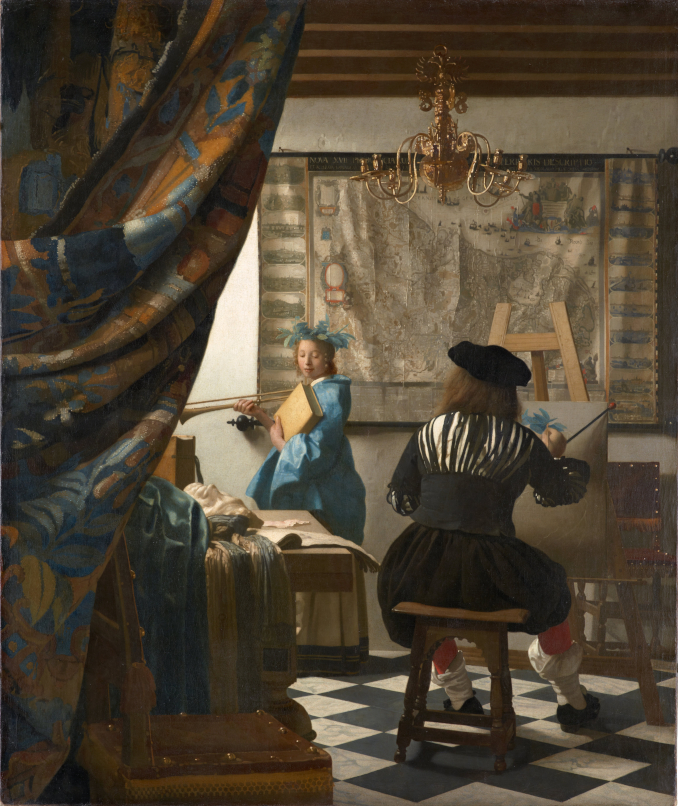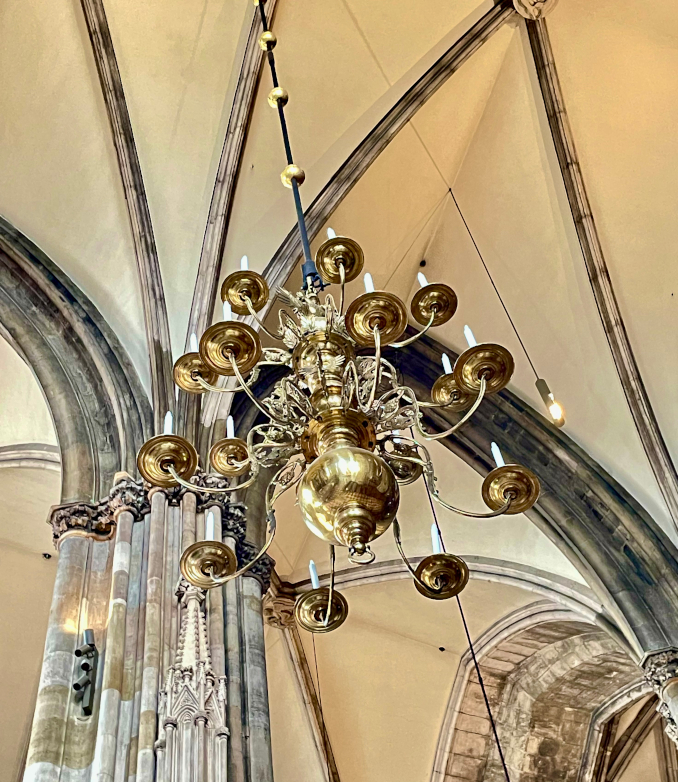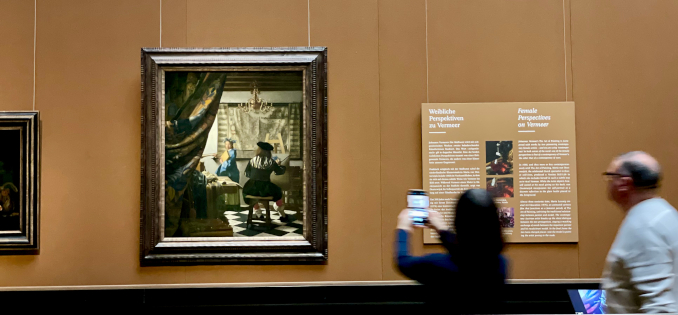Food for the Soul: Vermeer’s The Art of Painting in Vienna

We conclude “The Year of Vermeer” at Food for the Soul with a visit to The Art of Painting , which can be found at the Kunsthistorisches Museum in Vienna. Vermeer painted it around 1666, at the height of his artistic power, and the title assigned to this canvas by historians seems to reflect the sum of his ideas about the act of creating a painted picture.
Most Vermeer pictures are domestic scenes of people drinking, making music, writing and reading, or doing small tasks like pouring milk or trying on jewelry. These scenes may include some symbolic or allegorical clues, but they remain within the popular category of Dutch Baroque genre paintings. The Art of Painting is not really a domestic scene though; its much larger size and the theme of an artistic pursuit place the work in the category that was most esteemed by 17th-century artists and collectors—the genre of “history and allegory” painting.
The scene is “carefully staged,” as we would say today. The model, a young woman in a laurel wreath, is Clio (i.e. the Muse of History), who poses holding a heavy book and a trumpet—traditional attributes of Clio as prescribed by Italian Renaissance art textbooks. The book she is holding (in a traditional allegory it was supposed to be History of the Peloponnesian War by Thucydides) is a hefty tome. Realistically, she should not have to be holding it at all, since the artist is in the middle of painting her laurel wreath and not the props. But then the viewer might not figure out who she is supposed to be.

The painter himself is sumptuously dressed in an elaborate costume (flamboyant slashed silk sleeves, bright red socks, a traditional artist’s beret)—hardly practical attire for handling paint, but appropriate for elevating the stature of his profession as the one that can preserve memories, images, and historical facts for the future. In fact, his striped doublet was fashionable in an earlier era, so he is wearing a historical costume. The room in which the painting is taking place does not resemble an artist’s studio either. A checkered marble floor would have graced only the grandest rooms in affluent homes; in addition, a large decorative old map covers one wall, and the scene is revealed to us by an imposing tapestry, dramatically pulled aside. A few symbolic objects are arranged on a table on the left—a plaster mask or a cast of a head, some large cloth in contrasting colors of blue and yellow, as well as a book of sketches. In paintings, all these are symbols of either art or history. The large, cartographically precise map is a perfect example of this symbolism—this map of the Netherlands’ 17 provinces was published in 1636 and showed the country before the divisive war that split the territory into the Spanish Netherlands and the Dutch Republic. Perhaps the artist was alluding to a wish of many of his countrymen that the Netherlands remain united, but in any case, by the time Vermeer painted his picture, this map would have been a historical relic. This is, therefore, another artifact that alludes to times past—so appropriate if this is an allegory of both design and history.

Everything in this composition is arranged and dramatically staged. Instead of a mundane scene of a craftsman in a paint-spattered smock laboring in his studio with a hired model, we are looking at a well-dressed artist evoking mythology and history, working in a beautiful room that is lit with an imposing six-armed chandelier of a style that would have been found more often in churches or state rooms rather than private homes.

Much of this pictorial knowledge of Vermeer’s time is now lost to us. Our artists work differently; our rooms, whether grand or modest, all have different decorations, and no one paints allegories anymore. However, we still do have painters who, like the one in the picture, sit in front of an easel, glancing back and forth between a model and the canvas. Today’s painters may dab into colored oil paste, supporting their arm with a mahlstick—exactly as we see in Vermeer’s picture. And this is the lasting power of this painting. Allegory or not, with or without a map of lands redrawn many times since, this is still a picture of an artist creating something original, something beautiful, and something that has a chance to outlast us all—just as this picture from the year 1666 has outlasted its painter and so many generations after him.
